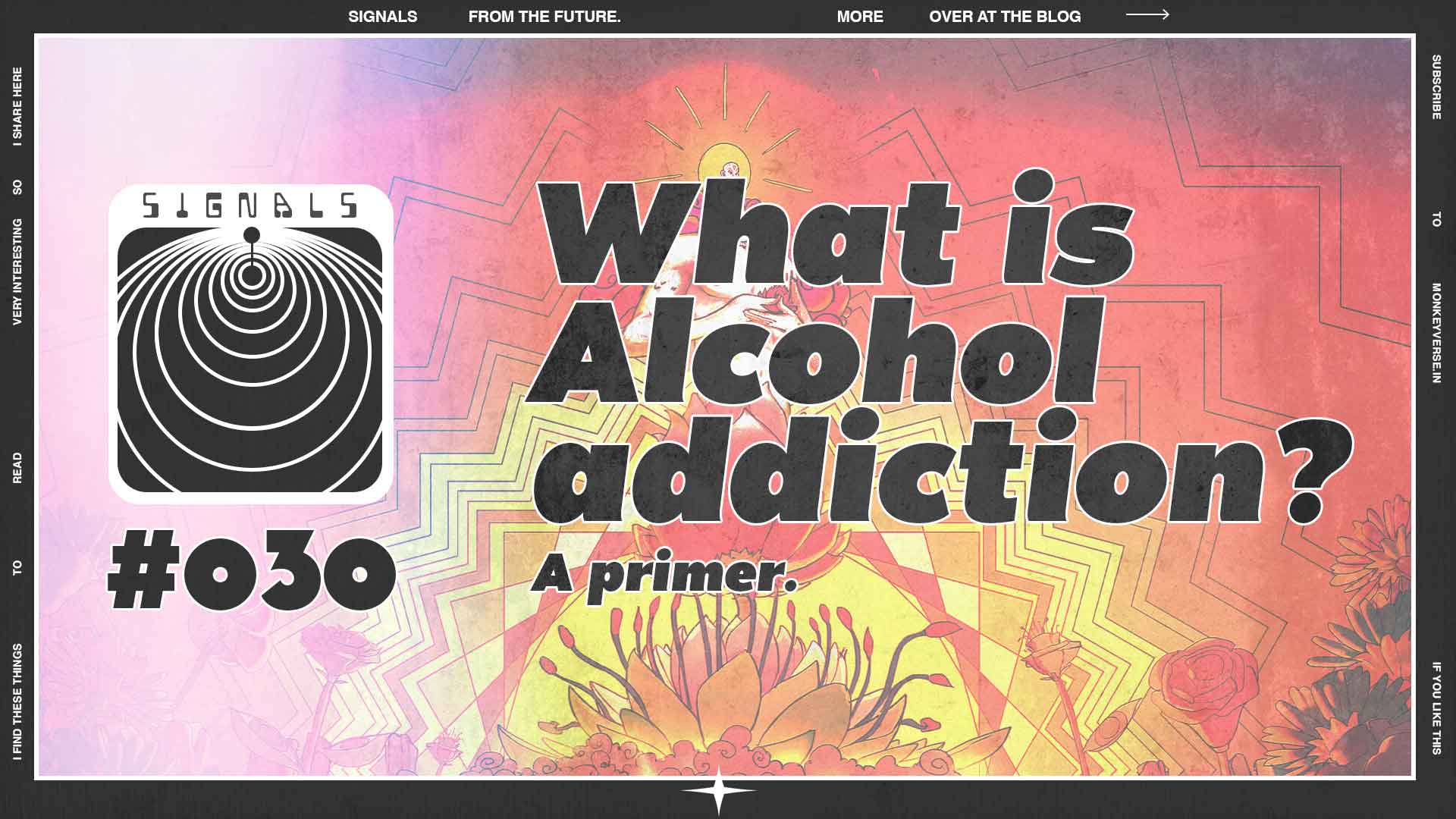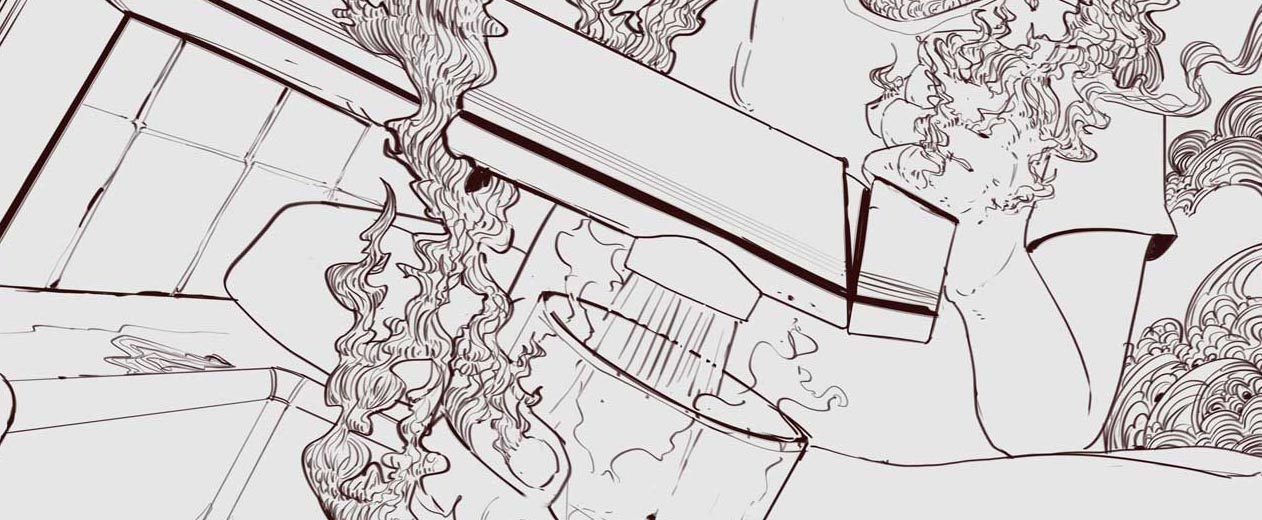
What is Alcohol Addiction?
Alcohol addiction is when the brain becomes rewired to rely on alcohol for pleasure, stress relief, or emotional regulation; and when personal, social, or genetic factors reinforce that dependency.
1/ Dopamine Traps
Alcohol stimulates dopamine (the “pleasure” chemical) and GABA (which calms the brain). Over time, the brain adapts to this, reducing its own production of these chemicals leading to the need for more alcohol to feel normal. This is the same as the ‘increasing tolerance’ for alcohol.
Where the brain/body feels anxious, restless, or low without it, is the ‘dependence’ on alcohol. The saddest part is that gradually people no longer drink to feel good, they drink to avoid feeling bad.
2/ Repetition + Ritual = Habit Loop
Drinking is a weird habit and because of its general acceptance in society it very easily becomes tied to our lives — experiences, instances, people, emotions, or routines such as “I need a drink to unwind”, “I always drink with friends”.
This is a symptom of the brain forming cue-reward loops that makes it automatic and harder to break the cycle.
3/ Psychological Factors
It goes without saying that stress, trauma, grief, or emotional pain often lead people to self-medicate with alcohol. People use it to numb feelings, feel socially relaxed, or escape boredom. And mental health issues definitely increase vulnerability.
4/ Genetics and Family History
There is also a vast amount of research that suggests that people with a family history of addiction are more likely to develop alcohol dependence.
5/ Environment & Social Conditioning
Cultural acceptance of drinking, “it’s normal to drink every weekend”, normalizes frequent use while ease of availability plays a big role in its regular consumption. Growing up in a home with regular or abusive alcohol use also increases the risk.
6/ Early Use = Higher Risk
Drinking heavily before age 21 can significantly increase the risk of lifelong addiction. The adolescent brain is still developing and more vulnerable to dependency.

"We drink when we are happy and we drink when we are sad.""We drink when we are happy and we drink when we are sad."
What is the difference between addiction and dependence?
Addiction and Dependence are different where Addiction involves compulsive, harmful substance use or behaviours and ‘Dependence’ is when the body physically relies on a substance.
Dependence is physical; addiction is neurological.
It’s possible to be dependent on a drug without being addicted — Tea & coffee. You might get a headache after skipping your morning coffee but it doesn’t mean you’re addicted to caffeine.
Alcohol in the everyday
Given that we are drinking for almost all reasons, I also wanted to find make a list of everyday products that contain alcohol. To my surprise, putting this together was an eye opener — It’s everywhere!
1/ Consumable (Ethanol-Based) Alcoholic Beverages
- Fermented Alcoholic Drinks — Beer, Wine (red, white, rosé), Sake, Mead, and Cider.
- Distilled Spirits (Stronger) — Whisky/Bourbon, Vodka, Rum, Brandy, Gin, Tequila and Soju/Shochu.
- Fortified Wines — Port, Sherry and Vermouth.
2/ Medicinal & Pharmaceutical Products
- Cough syrups, Mouthwashes, Hand sanitizers, Tinctures (herbal extracts in alcohol), Some homeopathic remedies, Liquid cold & flu medications, and Disinfectants or antiseptic swabs.
3/ Personal Care & Beauty Products
- Perfumes & body sprays (contain ethanol or denatured alcohol), Deodorants, Aftershaves, Facial toners, Hair sprays or gels, Nail polish removers (contain isopropyl alcohol or ethyl acetate), Some creams or lotions (contain cetyl or stearyl alcohol – fatty alcohols, not intoxicating)
4/ Household & Industrial Products
- Rubbing alcohol (usually 70% isopropyl alcohol), Paint thinners, Cleaning sprays, Air fresheners, Fuel additives, Stove or camping fuel, Solvents and degreasers
5/ Fermented Foods (Trace Ethanol)
- Kombucha, Pickles (brine-fermented), Soy sauce, Vinegar (some types contain residual ethanol), Overripe fruit, Sourdough bread (during rising)
6/ Industrial Alcohols
- Methanol (wood alcohol) — Fuel, solvents — Deadly if ingested
- Isopropyl alcohol (rubbing alcohol) — Cleaning, medical — Toxic if ingested
- Denatured alcohol — Industrial cleaner — Contains ethanol made poisonous
- Butanol, Propanol — Lab/chemical use — Industrial use only
Though most of the items on the list do not cause ‘addiction’, it is interesting to see the different forms alcohol takes. It is deeply ingrained in our everyday from looking beautiful to feeling sick to cleaners to social gatherings.
—
Given that alcohol is such an integral part of our everyday, and without realising it we might be consuming it all the time in trace amount — I am curious how then do we talk about it. When we speak of addictions, do we only talk about the ‘drinking’. Or do we talk about the social acceptance of it?
Some of the sources used to put this together
- National Institute on Alcohol Abuse and Alcoholism (NIAAA) — Provides detailed research on the biological, psychological, and social causes of alcohol addiction.
- National Institute on Drug Abuse (NIDA): Alcohol Research — Explains how alcohol affects brain chemistry, dopamine pathways, and long-term behavior.
- Mayo Clinic: Alcohol Use Disorder — Covers symptoms, causes, and risk factors of alcohol addiction.
- Harvard Health Publishing: The Science of Addiction — Includes insights on brain changes, behavioural loops, and the role of environment and genetics.
- UNITE US — Definitions for the words.
—
Breathe 🙂
Yuvraj Jha.
Concept Artist. Worldbuilder. Storyteller.
Insta – @monkeyverse | Youtube – @monkeyverse_in
Shop – bandarchaap.com | Insta – @bandar.chhaap
2 Comments
Comments are closed.

Pingback: Studio F-ARTs from August – Monkeyverse